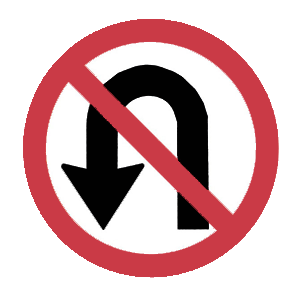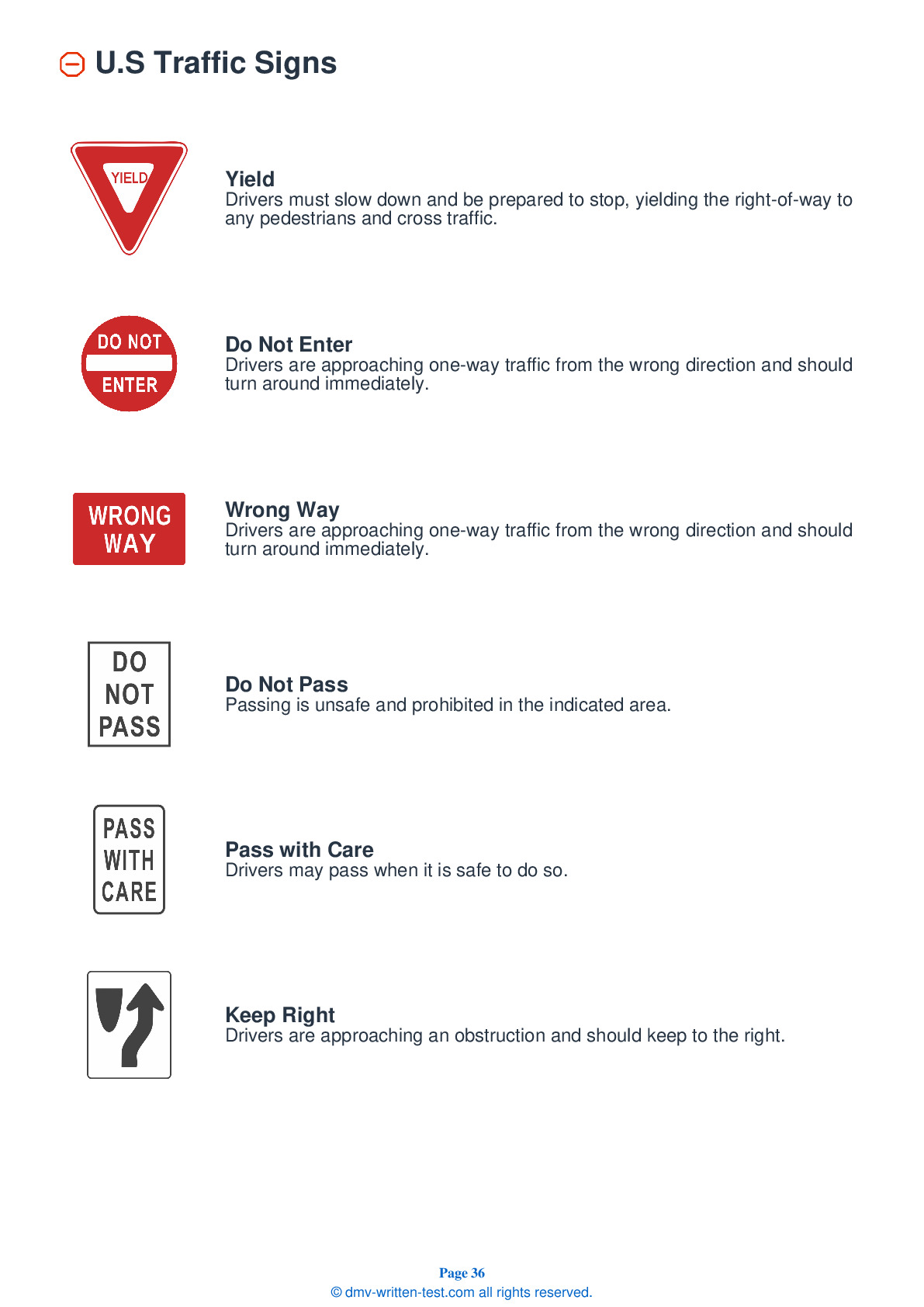2025 New Hampshire Permit Test 12
The following questions are from real DMV written tests. These are some of the actual permit questions you will face in New Hampshire. Each permit practice test question has three answer choices. Select one answer for each question and select "grade this section." You can find this button at the bottom of the drivers license quiz. For a complete list of questions and answers for New Hampshire please visit https://cheat-sheets.dmv-written-test.com/en/new-hampshire/car.
Number of Tests
Number of Question
Passing Score
17. When a stop is required at an intersection and no markings appear to indicate a stop line or crosswalk, a driver:
Explanation
If there is no stop line or crosswalk, you should stop at the point nearest to the intersecting roadway where you can get a view of approaching traffic. You should not enter the intersecting roadway to gain a better view.
18. This road sign means:

Explanation
This signs indicate that U-turns are prohibited in the location where it is posted.
19. You may cross double solid yellow lines:
Explanation
Double solid lines indicate that you may not pass or change lanes. You cannot cross the lines unless it is to turn left to enter or exit a highway, to turn into or from a driveway, or to make a U-turn (where permitted).
20. When approaching a school bus stopped with its stop arm extended, drivers should:
Explanation
When approaching a stopped school bus that is using its stop signal, a driver is required to come to a complete stop. They should not proceed until the stop arm is withdrawn.
21. What should you do when an emergency vehicle is approaching while displaying flashing red or blue lights?
Explanation
You must yield the right-of-way to all emergency vehicles using a siren, air horn, and/or flashing red, blue, or white lights. Where possible, you must pull over to the right edge of the road. If you are in an intersection, drive through the intersection before you pull over.
22. If someone is driving aggressively behind you, you should:
Explanation
If you encounter an aggressive driver, you should make every attempt to get out of their way. You should avoid making eye contact with a hostile driver. Challenging a hostile driver by speeding up may only make them angrier, thereby increasing their danger.
23. To avoid being in a truck or bus driver’s blind spot, you should:
Explanation
Because a large vehicle, such as a truck or bus, has large blind spots to its sides and rear, avoid driving alongside such a vehicle and do not tailgate one.
24. To check your blind spot when changing lanes to the left, you should glance:
Explanation




